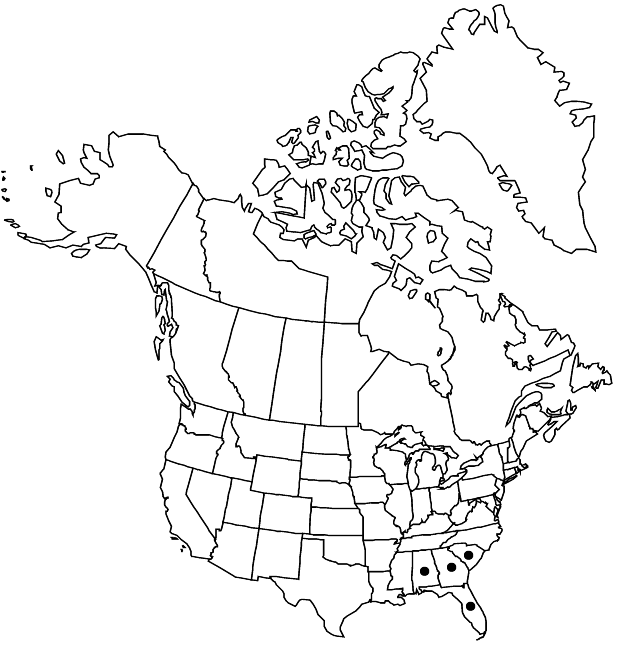Kalmia hirsuta
Fl. Carol., 138. 1788 ,.
Shrubs spreading to erect, 0.3–0.6 (–1.2) m. Twigs terete, viscid, puberulent, densely hispid. Leaves alternate; petiole 0.1–1 mm, hirsute-puberulent; blade elliptic to ovate, 0.5–1.4 × 0.1–0.8 cm, margins slightly revolute, apex acute, rounded-apiculate, surfaces usually puberulent, hispid, and stipitate-glandular, rarely glabrous. Inflorescences axillary, scattered along stem, usually solitary flowers, sometimes fascicles or compact racemes, 2–5-flowered. Pedicels 10–15 mm. Flowers: sepals tardily deciduous, green, lanceolate, 3–8 mm, apex acute, surfaces puberulent, hispid, stipitate-glandular; petals connate their entire lengths, pink (rarely white), red near anther pockets, with ring of red spots proximal to pockets, 8–10 × 10–15 mm, usually sparsely hirsute and stipitate-glandular on keels abaxially, puberulent at base adaxially; filaments 3–4 mm; style 5–7.5 mm. Capsules 5-locular, 2–3.5 × 2–4 mm, sparsely stipitate-glandular. Seeds not winged, ovoid, 0.2–0.5 mm. 2n = 24.
Phenology: Flowering May–Jul.
Habitat: Open sandy savannas, sand hills, and pine barrens
Elevation: 0-100 m
Distribution

Ala., Fla., Ga., S.C.
Discussion
Selected References
None.
Lower Taxa
"entire" is not a number.